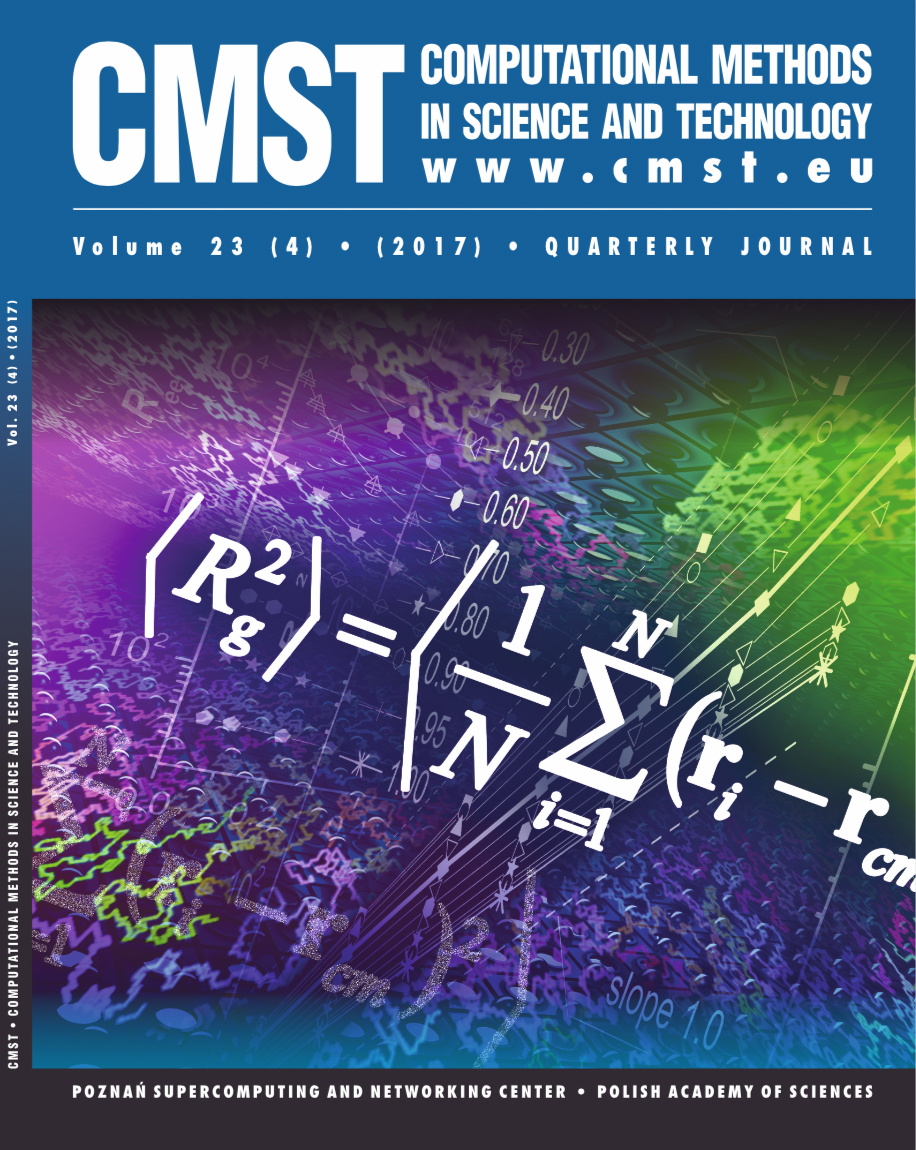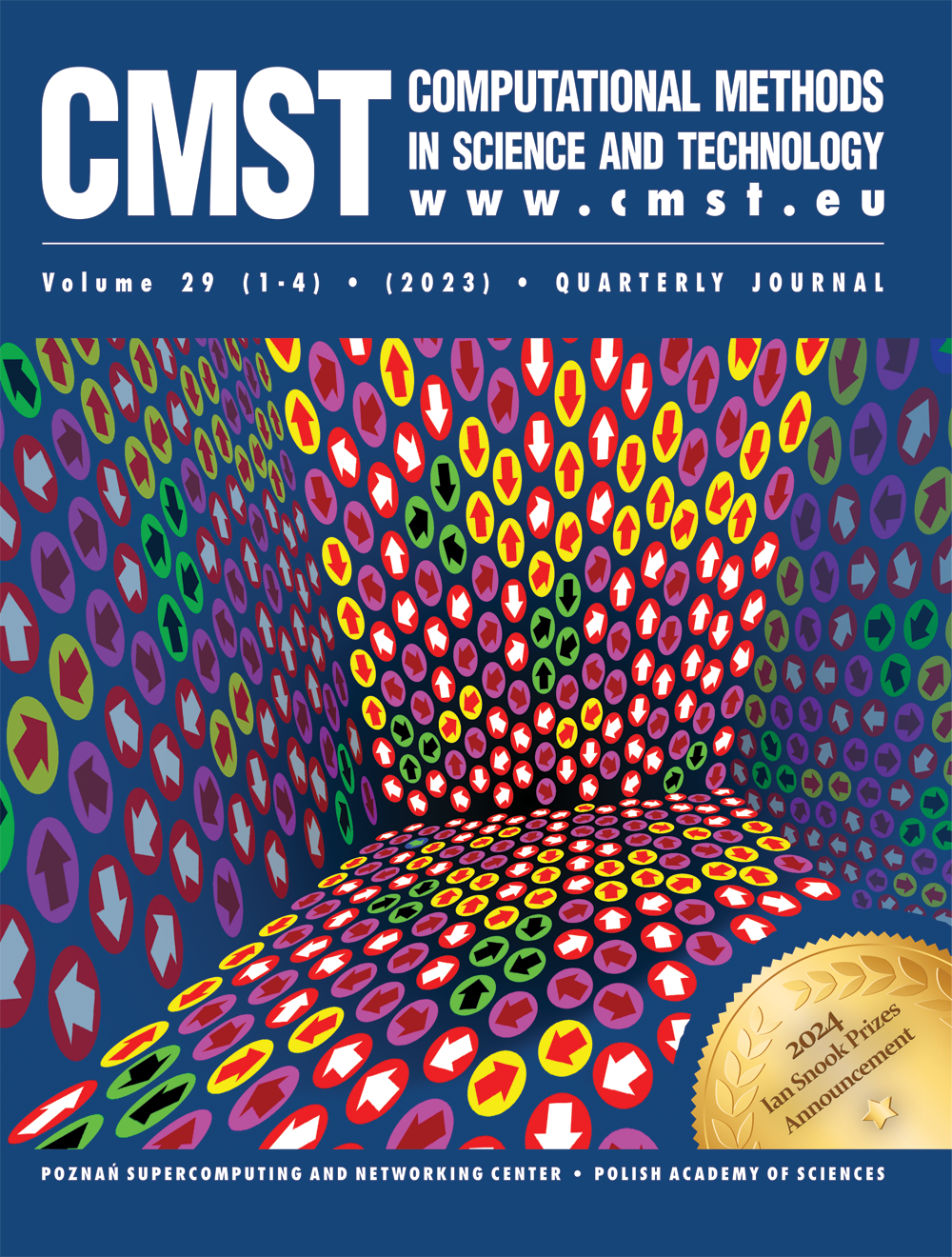Minimal Energy Dissipation Rate and Director Orientation Relative to External Dissipative Fields such as Temperature and Velocity Gradients in Nematic and Cholestric Liquid Crystals
Sarman Sten *, Wang Yong-Lei, Laaksonen Aatto
Department of Materials and Environmental Chemistry Arrhenius Laboratory, Stockholm University
106 91 Stockholm, Sweden*E-mail: sarman@ownit.nu
Received:
Received: 22 December 2016; revised: 13 March 2017; accepted: 15 March 2017; published online: 30 September 2017
DOI: 10.12921/cmst.2016.0000066
Abstract:
The purpose of this review article is to summarize observations accumulated over the years on director alignment phenomena in nematic and cholesteric liquid crystals by molecular dynamics simulation of molecular model systems and by experiment on real systems. The main focus is on the alignment angle between the director and external dissipative fields such as velocity gradients in various flow geometries and temperature gradients doing irreversible work on the system. A general observation is that the director attains an orientation relative to the field where the energy dissipation rate is minimal in the steady state. In the case of planar elongational flow, it can be proven by using symmetry arguments that the energy dissipation rate must be either maximal or minimal and simulations have shown that is minimal. In planar Couette flow both simulations and experiments imply that the energy dissipation rate is minimal in the steady state. Finally, in the case of heat conduction, symmetry arguments imply that the energy dissipation rate must be either minimal or maximal and simulations and experiments indicate that it is minimal. All these observations can be explained by applying a recently proven theorem according to which the energy dissipation rate is minimal in the steady state in the linear regime at low fields.
Key words:
alignment phenomena, elongational flow, heat conduction, liquid crystals, minimal energy dissipation rate, nonequilibrium molecular dynamics simulation, shear flow
References:
[1] S. Chandrasekhar, Liquid Crystals, Cambridge University Press, Cambridge, 1992.
[2] P.G. de Gennesand J.Prost, The Physicsof Liquid Crystals, Clarendon Press, Oxford, 1993.
[3] S.R.de Grootand P.Mazur, Nonequilibrium Thermodynamics, Dover, New York,1984.
[4] S. Sarman, J. Chem. Phys. 103, 393 (1995).
[5] S. Sarman, J. Chem. Phys. 103, 10378 (1995).
[6] J. Jadzyn and G. Czechowski, J. Phys.: Condens. Matter, 13, L261 (2001).
[7] S. Sarman and A. Laaksonen, Phys. Chem. Chem. Phys. 17, 3332 (2015).
[8] D.J. Evans, D.J. Searles and S.R. Williams, Fundamentals of Classical Statistical Thermodynamics: Dissipation, Relaxation and Fluctuation Theorems, Wiley-VCH (2016).
[9] G.W. Stewart, J. Chem. Phys., 4, 231 (1936).
[10] D.O. Holland and G.W. Stewart, Phys. Rev., 51, 62 (1937).
[11] G.W. Stewart, D.O. Holland and L.M. Reynolds, Phys. Rev., 58, 174 (1940).
[12] G.W. Stewart, Phys. Rev., 69, 51 (1946).
[13] J.J.C. Picot and A.G. Fredrickson, Ind. Eng. Chem. Fundam., 1, 84 (1968).
[14] J. Fisher and A.G. Fredrickson, Mol. Cryst. Liq. Cryst., 6, 255 (1969).
[15] M.N. Patharkar, V.S.V. Rajan and J.J.C. Picot, Mol. Cryst. Liq. Cryst., 15, 225 (1971).
[16] P.K. Currie, Rheol. Acta, 12, 165 (1973).
[17] S. Sarman and A. Laaksonen, Phys. Chem. Chem. Phys., 16, 14741 (2014).
[18] J.G. Gay and B.J. Berne, J. Chem. Phys., 74, 3316 (1981).
[19] M.A. Bates and G.R. Luckhurst, J. Chem. Phys., 104, 6696 (1996).
[20] N. Éber and I. Jánossy, Mol. Cryst. Liq. Cryst., Lett. Sect., 72, 233 (1982)
[21] P. Oswald and A. Dequidt, Phys. Rev. Lett., 100, 217802 (2008).
[22] P. Oswald, Eur. Phys. J. E: Soft Matter Biol. Phys., 35, 10 (2012).
[23] F.M. Leslie, Quart. Journ. Mech. Appl. Math. 19, 357 (1966).
[24] S. Sarman and A. Laaksonen, J. Chem. Phys., 131, 144904 (2009).
[25] D.J. Evansand G.P. Morriss, Statistical Mechanicsof Nonequilibrium Liquids, Academic Press, London, 1990.
[26] A.M. Kraynik and D.A. Reinelt, Int. J. Multiphase Flow, 18, 1045 (1992).
[27] A. Baranyai and P.T. Cummings, J. Chem. Phys., 103, 10217 (1995).
[28] B.D. Todd and P.J. Daivis, Phys. Rev. Lett., 81, 1118 (1998).
[29] B.D.Toddand P.J.Daivis, Molecular Simulation,33,189(2007).
[30] S. Sarman, J. Chem. Phys., 101, 480 (1994).
[31] F.M. Leslie, Proc. R. Soc. A, A307, 359 (1968).
[32] F.M. Leslie, Symp. Faraday Soc., 5, 33 (1971).
[33] W.G. Hoover, A.J.C. Ladd and B. Moran, Phys. Rev. Lett., 48, 1818 (1982).
[34] D.J. Evans, W.G. Hoover, B.H. Failor, B. Moran and A.J.C. Ladd, Phys. Rev. A, 28, 1016 (1983).
[35] W.G.Hoover, Computational Statistical Mechanics, Elsevier (1991).
[36] D.J. Evans and S. Sarman, Phys. Rev. E, 48, 65 (1992).
[37] S. Hess, J. Non-Equilib. Thermodyn. 11, 175 (1986).
[38] T.Ikeshojiand B.Hafskjold, Molecular Physics 81, 251(1994).
The purpose of this review article is to summarize observations accumulated over the years on director alignment phenomena in nematic and cholesteric liquid crystals by molecular dynamics simulation of molecular model systems and by experiment on real systems. The main focus is on the alignment angle between the director and external dissipative fields such as velocity gradients in various flow geometries and temperature gradients doing irreversible work on the system. A general observation is that the director attains an orientation relative to the field where the energy dissipation rate is minimal in the steady state. In the case of planar elongational flow, it can be proven by using symmetry arguments that the energy dissipation rate must be either maximal or minimal and simulations have shown that is minimal. In planar Couette flow both simulations and experiments imply that the energy dissipation rate is minimal in the steady state. Finally, in the case of heat conduction, symmetry arguments imply that the energy dissipation rate must be either minimal or maximal and simulations and experiments indicate that it is minimal. All these observations can be explained by applying a recently proven theorem according to which the energy dissipation rate is minimal in the steady state in the linear regime at low fields.
Key words:
alignment phenomena, elongational flow, heat conduction, liquid crystals, minimal energy dissipation rate, nonequilibrium molecular dynamics simulation, shear flow
References:
[1] S. Chandrasekhar, Liquid Crystals, Cambridge University Press, Cambridge, 1992.
[2] P.G. de Gennesand J.Prost, The Physicsof Liquid Crystals, Clarendon Press, Oxford, 1993.
[3] S.R.de Grootand P.Mazur, Nonequilibrium Thermodynamics, Dover, New York,1984.
[4] S. Sarman, J. Chem. Phys. 103, 393 (1995).
[5] S. Sarman, J. Chem. Phys. 103, 10378 (1995).
[6] J. Jadzyn and G. Czechowski, J. Phys.: Condens. Matter, 13, L261 (2001).
[7] S. Sarman and A. Laaksonen, Phys. Chem. Chem. Phys. 17, 3332 (2015).
[8] D.J. Evans, D.J. Searles and S.R. Williams, Fundamentals of Classical Statistical Thermodynamics: Dissipation, Relaxation and Fluctuation Theorems, Wiley-VCH (2016).
[9] G.W. Stewart, J. Chem. Phys., 4, 231 (1936).
[10] D.O. Holland and G.W. Stewart, Phys. Rev., 51, 62 (1937).
[11] G.W. Stewart, D.O. Holland and L.M. Reynolds, Phys. Rev., 58, 174 (1940).
[12] G.W. Stewart, Phys. Rev., 69, 51 (1946).
[13] J.J.C. Picot and A.G. Fredrickson, Ind. Eng. Chem. Fundam., 1, 84 (1968).
[14] J. Fisher and A.G. Fredrickson, Mol. Cryst. Liq. Cryst., 6, 255 (1969).
[15] M.N. Patharkar, V.S.V. Rajan and J.J.C. Picot, Mol. Cryst. Liq. Cryst., 15, 225 (1971).
[16] P.K. Currie, Rheol. Acta, 12, 165 (1973).
[17] S. Sarman and A. Laaksonen, Phys. Chem. Chem. Phys., 16, 14741 (2014).
[18] J.G. Gay and B.J. Berne, J. Chem. Phys., 74, 3316 (1981).
[19] M.A. Bates and G.R. Luckhurst, J. Chem. Phys., 104, 6696 (1996).
[20] N. Éber and I. Jánossy, Mol. Cryst. Liq. Cryst., Lett. Sect., 72, 233 (1982)
[21] P. Oswald and A. Dequidt, Phys. Rev. Lett., 100, 217802 (2008).
[22] P. Oswald, Eur. Phys. J. E: Soft Matter Biol. Phys., 35, 10 (2012).
[23] F.M. Leslie, Quart. Journ. Mech. Appl. Math. 19, 357 (1966).
[24] S. Sarman and A. Laaksonen, J. Chem. Phys., 131, 144904 (2009).
[25] D.J. Evansand G.P. Morriss, Statistical Mechanicsof Nonequilibrium Liquids, Academic Press, London, 1990.
[26] A.M. Kraynik and D.A. Reinelt, Int. J. Multiphase Flow, 18, 1045 (1992).
[27] A. Baranyai and P.T. Cummings, J. Chem. Phys., 103, 10217 (1995).
[28] B.D. Todd and P.J. Daivis, Phys. Rev. Lett., 81, 1118 (1998).
[29] B.D.Toddand P.J.Daivis, Molecular Simulation,33,189(2007).
[30] S. Sarman, J. Chem. Phys., 101, 480 (1994).
[31] F.M. Leslie, Proc. R. Soc. A, A307, 359 (1968).
[32] F.M. Leslie, Symp. Faraday Soc., 5, 33 (1971).
[33] W.G. Hoover, A.J.C. Ladd and B. Moran, Phys. Rev. Lett., 48, 1818 (1982).
[34] D.J. Evans, W.G. Hoover, B.H. Failor, B. Moran and A.J.C. Ladd, Phys. Rev. A, 28, 1016 (1983).
[35] W.G.Hoover, Computational Statistical Mechanics, Elsevier (1991).
[36] D.J. Evans and S. Sarman, Phys. Rev. E, 48, 65 (1992).
[37] S. Hess, J. Non-Equilib. Thermodyn. 11, 175 (1986).
[38] T.Ikeshojiand B.Hafskjold, Molecular Physics 81, 251(1994).



